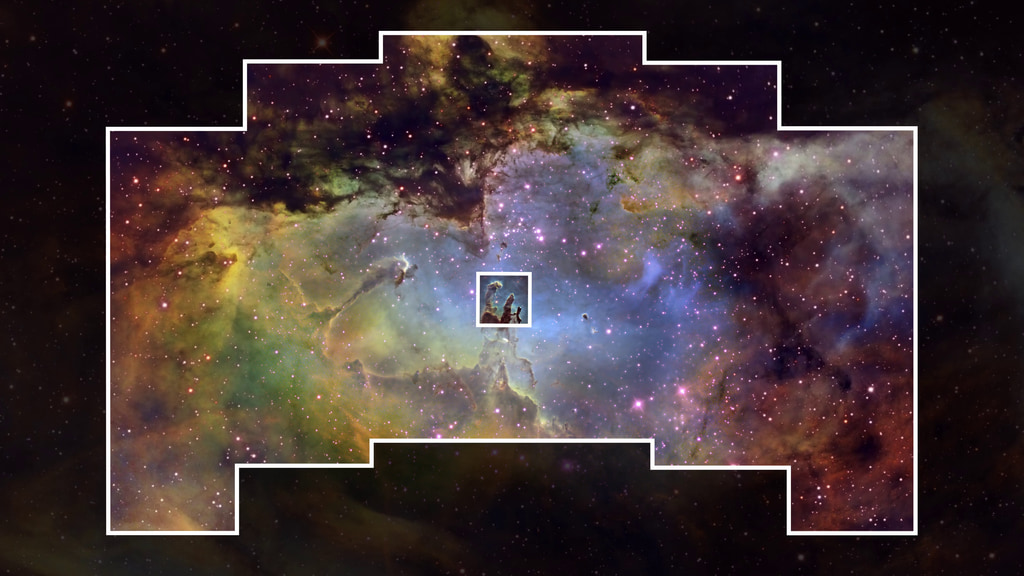Scheduled to launch by May 2027, the Nancy Grace Roman Space Telescope will unveil the cosmos in ways that have never been possible before. With a field of view at least 100 times larger than Hubble’s, Roman will survey the sky 1,000 times faster than Hubble can while maintaining similar sensitivity and infrared resolution. Roman will look at billions of cosmic objects to explore how planets, stars, and galaxies form and develop over time.

The mission’s wide field of view will allow it to generate never-before-seen big pictures of the universe, which will help astronomers explore some of the greatest mysteries of the cosmos, including why the expansion of the universe seems to be accelerating. One possible explanation for this speed-up is dark energy, an unexplained pressure that currently makes up 68 percent of the total content of the cosmos and may have been changing over the history of the universe. Another possibility is that this apparent cosmic acceleration points to the breakdown of Einstein’s general theory of relativity across large swaths of the universe. The Roman Space Telescope will have the power to test both of these ideas.
Wide Field Instrument
To learn more about dark energy, Roman will use its powerful 2.4-meter mirror and Wide Field Instrument to do two things: map how matter is structured and distributed throughout the cosmos and measure how the universe has expanded over time. In the process, the mission will study galaxies across cosmic time, from the present back to when the universe was only half a billion years old, or about 4 percent of its current age.
Roman will do this through multiple observational strategies, including surveys of exploding stars called supernovae and galaxy clusters, and mapping out the distribution of galaxies in three dimensions. Measuring the brightness and distances of supernovae provided the first evidence for the presence of dark energy. Roman will extend these studies to greater distances to measure how dark energy's influence increased over time.
Roman will measure precise distances to galaxy clusters to map how they grew over time. The mission will also pinpoint the distances to millions of galaxies by measuring how their light becomes redder at greater distances, a phenomenon called redshift. The farther off a galaxy is, the redder its light appears when we see it. Mapping out the 3D positions of galaxies will allow astronomers to measure how the distribution of galaxies has changed over time, providing another measure of how dark energy has affected the cosmos.
The Wide Field Instrument will also allow Roman to measure the matter in hundreds of millions of distant galaxies through a phenomenon dictated by Einstein’s relativity theory. Massive objects like galaxies curve space-time in a way that bends light passing near them, creating a distorted, magnified view of far-off galaxies behind them. Using this magnifying glass effect, called weak gravitational lensing, Roman will paint a broad picture of how matter is structured throughout the universe, allowing scientists to put the governing physics of its assembly to the ultimate test.
Microlensing
The Roman Space Telescope can use this same light-bending phenomenon to study planets beyond our solar system, known as exoplanets. In a process called microlensing, a foreground star in our galaxy acts as the lens. When its motion randomly aligns with a distant background star, the lens magnifies, brightens and distorts the background star. As the lensing star drifts along in its orbit around the galaxy and the alignment shifts, so does the apparent brightness of the star. The precise pattern of these changes can reveal planets orbiting the lensing star because the planets themselves serve as miniature gravitational lenses. Such alignments must be precise and last only hours.
The Roman Space Telescope's microlensing survey will monitor 100 million stars for hundreds of days and is expected to find about 2,500 planets, with significant numbers of rocky planets in and beyond the region where liquid water may exist. This planet-detection method is sensitive enough to find planets smaller than Mars, and will reveal planets orbiting their host stars at distances ranging from closer than Venus to beyond Pluto. These results will make Roman an ideal companion to missions like Transiting Exoplanet Survey Satellite (TESS), which is best suited to find larger planets orbiting closer to their host stars. Together, discoveries from these three missions will help complete the census of planets beyond our solar system, helping us learn how planets form and migrate into systems like our own.
Coronagraph Instrument
The Roman Space Telescope will also feature a Coronagraph Instrument designed to demonstrate technology to directly image exoplanets by blocking out a star’s light, allowing the much fainter planets to be observed.
Roman will serve as an important tool for the science community through its General Investigator program. All Roman data will be publicly available immediately after processing and delivery to the archive. Also, by submitting proposals through the competitive program, scientists around the world will be able to use the observatory to study the cosmos in their own way, from the nearest exoplanets out to clusters of distant galaxies.
By pioneering an array of innovative technologies, the Roman Space Telescope will serve as a multipurpose mission, furnishing a big picture of the universe and helping us answer some of the most profound questions in astrophysics, such as how the universe evolved into what we see today, and what its ultimate fate could be.



























